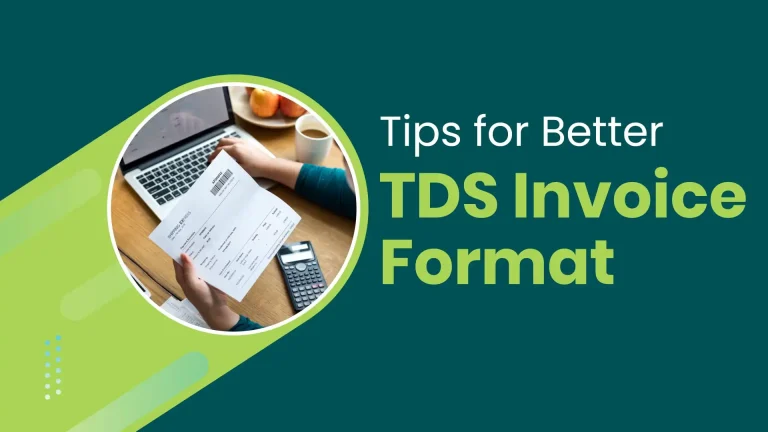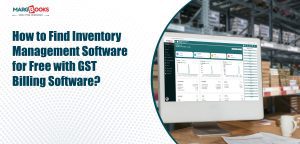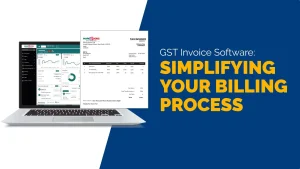Creating a proper TDS invoice format is crucial for businesses to ensure compliance with tax regulations and maintain smooth financial operations. TDS, or Tax Deducted at Source, is a system introduced by the Income Tax Department, wherein tax is collected at the source of income. Understanding and implementing an effective TDS invoice format can significantly ease the process of filing returns and maintaining accurate financial records. In this blog, we will explore various aspects of TDS invoice formats, provide tips for creating an efficient format, and discuss best practices to ensure compliance with tax laws.
Understanding TDS and Its Importance
Before diving into the specifics of TDS invoice formats, it’s essential to understand what TDS is and why it’s important. TDS is a method used by the government to collect tax directly from the source of income. It is deducted by the payer and remitted to the government on behalf of the payee. The objective of TDS is to collect tax at the very source of income, which minimizes tax evasion and ensures a steady flow of revenue to the government.
Key Components of a TDS Invoice Format
A TDS invoice must include several critical components to be valid and compliant with tax regulations. Here are the key elements that should be present in a TDS invoice:
1. Invoice Number
Each invoice should have a unique identification number. This helps in tracking and referencing invoices easily.
2. Date of Issue
The date when the invoice is issued should be clearly mentioned. This is important for record-keeping and for determining the relevant financial period.
3. Details of the Payer and Payee
Both the payer’s and payee’s details should be included in the invoice. This includes names, addresses, and contact information. Additionally, the PAN (Permanent Account Number) of both parties should be mentioned.
4. Nature of Payment
The invoice should specify the nature of the payment being made. This could be for professional services, rent, contract, etc. Clearly mentioning the nature of the payment helps in identifying the applicable TDS rate.
5. Amount Paid
The gross amount paid before TDS deduction should be stated in the invoice. This is the total amount due before any tax deduction is made.
6. TDS Rate and Amount
The applicable TDS rate and the amount of tax deducted should be clearly mentioned. The TDS amount is calculated on the gross amount and deducted before making the payment to the payee.
7. Net Amount Paid
After deducting the TDS, the net amount paid to the payee should be stated. This is the amount that the payee receives after TDS deduction.
8. Challan Number
The challan number refers to the number of the receipt for the TDS payment made to the government. Including this in the invoice provides proof of payment.
9. Signature
The invoice should be duly signed by the authorized person from the payer’s side. This adds authenticity and legality to the document.
Tips for Creating an Effective TDS Invoice Format
Creating a well-structured TDS invoice format can save time and avoid errors. Here are some tips to ensure your TDS invoices are effective and compliant:
1. Use a Standard Template
Using a standard template for your TDS invoices can help maintain consistency and reduce errors. Templates can be easily customized to suit your business needs and ensure that all necessary information is included.
2. Automate the Process
Consider using accounting software that automates the creation of TDS invoices. This can save time and minimize human errors. Many accounting software solutions offer features to automatically calculate TDS amounts and generate compliant invoices.
3. Double-Check Information
Ensure that all details in the invoice are accurate. Incorrect information can lead to issues with TDS returns and potential penalties. Double-checking details like PAN numbers, TDS rates, and amounts can help avoid mistakes.
4. Stay Updated with Tax Laws
Tax laws and TDS rates can change periodically. It’s crucial to stay updated with the latest regulations to ensure your TDS invoices remain compliant. Regularly review government notifications and updates related to TDS.
5. Maintain Proper Records
Keeping accurate and organized records of all TDS invoices is essential for audit purposes and for filing TDS returns. Ensure that both digital and physical copies of invoices are stored securely.
TDS Invoice Format Example
|
|||
|
|||
| Payment Details | Amount | ||
| Nature of Payment: Professional Services | ₹ 50,000 | ||
| Gross Amount | ₹ 50,000 | ||
| TDS Rate | 10% | ||
| TDS Amount | ₹ 5,000 | ||
| Net Amount Paid | ₹ 45,000 | ||
| Total: ₹ 45,000 | |||
|
Challan Number: 1234567890 Authorized Signature: ____________________ |
|||
Common Mistakes to Avoid in TDS Invoices
Even with a clear understanding of TDS invoice formats, businesses can still make mistakes. Here are some common errors to watch out for:
1. Incorrect PAN Details
One of the most common mistakes is incorrect PAN details of the payer or payee. Ensure that the PAN numbers are accurate to avoid complications with tax authorities.
2. Wrong TDS Rates
Applying the incorrect TDS rate can lead to underpayment or overpayment of taxes. Verify the applicable TDS rate for each type of payment to ensure accuracy.
3. Missing Information
Omitting essential details like the invoice number, date, or nature of payment can render the invoice invalid. Always double-check that all required information is included.
4. Inaccurate TDS Amount Calculation
Incorrect calculation of the TDS amount can lead to discrepancies. Use reliable accounting software or tools to ensure accurate calculations.
5. Non-Compliance with Tax Laws
Failing to comply with the latest tax laws and regulations can result in penalties. Stay informed about changes in tax laws and ensure your invoices are compliant.
Benefits of a Proper TDS Invoice Format
Using a proper TDS invoice format offers several benefits to businesses. Here are some of the key advantages:
1. Ease of Compliance
A well-structured TDS invoice format makes it easier to comply with tax regulations. It ensures that all necessary information is included and helps avoid penalties.
2. Efficient Record-Keeping
Maintaining consistent and accurate TDS invoices aids in efficient record-keeping. This is particularly useful during audits and for filing TDS returns.
3. Reduced Errors
Using a standard template or automated system minimizes the chances of errors in TDS invoices. This helps in avoiding discrepancies and ensures accurate tax deductions.
4. Time-Saving
A proper TDS invoice format saves time by streamlining the invoicing process. This allows businesses to focus on other important aspects of their operations.
5. Improved Financial Management
Accurate TDS invoices contribute to better financial management by providing clear records of tax deductions and payments. This helps in managing cash flow and budgeting effectively.
Conclusion
Creating an effective TDS invoice format is essential for businesses to ensure compliance with tax regulations and maintain accurate financial records. By understanding the key components of a TDS invoice, following best practices, and avoiding common mistakes, businesses can streamline their invoicing process and improve financial management. Implementing a proper TDS invoice format not only ensures compliance but also saves time, reduces errors, and enhances overall financial efficiency.
Also Read
- Why is Inventory and Supply Chain Management Software Critical for SMEs?Small and Medium Enterprises (SMEs) are no exception, and one of the most crucial aspects of running a business successfully is managing inventory and supply chains effectively. With limited resources, SMEs need tools that can streamline their operations and reduce… Read more: Why is Inventory and Supply Chain Management Software Critical for SMEs?
- How to Find Inventory Management Software for Free with GST Billing Software?Running a business in India today requires more than just good products or services. With the rise in digital processes and GST regulations, keeping track of your stock, sales, and billing has become essential. That’s where the right inventory management… Read more: How to Find Inventory Management Software for Free with GST Billing Software?
- How Can Businesses Improve Logistics with e-Way Bill Tracking?The logistics plays a crucial role in determining how efficiently goods reach their destination. With the implementation of the Goods and Services Tax (GST) regime in India, one of the biggest game-changers in logistics and compliance has been the e-Way… Read more: How Can Businesses Improve Logistics with e-Way Bill Tracking?
- How to Choose the Best Invoicing Software for Your Business Needs?Running a business is no small task, you juggle multiple tasks, chase payments, handle accounts, and still try to grow. In such a hustle, generating and managing invoices manually can be a major headache. That’s where invoicing software comes into… Read more: How to Choose the Best Invoicing Software for Your Business Needs?
- How Does Online Invoice Software Help Digitize Retail Store Inventory Management?When customer expectations are high and margins are tighter than ever, retailers can’t afford inefficiencies in their operations. Whether you run a kirana shop in your neighbourhood or manage a chain of retail outlets across multiple cities, one area that… Read more: How Does Online Invoice Software Help Digitize Retail Store Inventory Management?
Frequently Asked Questions
What is a TDS invoice format and why is it important?
A TDS invoice format is a template used for creating invoices where Tax Deducted at Source (TDS) is applicable. It’s important because it ensures compliance with tax regulations by including all necessary details such as the invoice number, date, payer and payee information, TDS rate, and deducted amount. Using a proper TDS invoice format helps businesses accurately calculate and report TDS, avoid penalties, and maintain organized financial records for audits and tax filing purposes.
What are the essential components of a TDS invoice?
A TDS invoice should include the invoice number, date of issue, details of the payer and payee (including PAN), nature of payment, gross amount paid, applicable TDS rate, TDS amount deducted, net amount paid, and challan number for TDS payment. Additionally, the invoice should be signed by an authorized person from the payer’s side. These components ensure the invoice is complete and compliant with tax regulations, facilitating accurate tax deductions and reporting.
How do I choose the correct TDS rate for my invoice?
To choose the correct TDS rate for your invoice, you need to refer to the Income Tax Act, which specifies different TDS rates based on the nature of the payment. Common categories include professional fees, rent, and contractor payments, each having its own TDS rate. It’s crucial to stay updated with the latest rates as they can change. Consulting a tax professional or using accounting software that automatically updates TDS rates can also help ensure accuracy.
Can I automate the TDS invoice creation process?
Yes, you can automate the TDS invoice creation process by using accounting software. These software solutions typically offer features that calculate the TDS amount based on the applicable rate and generate compliant invoices. Automation helps save time, reduce human errors, and ensure that all required information is included in the invoice. It also simplifies the process of maintaining records and filing TDS returns, making the overall management of TDS more efficient.
What common mistakes should I avoid in TDS invoices?
Common mistakes in TDS invoices include incorrect PAN details of the payer or payee, wrong TDS rates, missing essential information (such as the invoice number or nature of payment), inaccurate TDS amount calculations, and non-compliance with current tax laws. To avoid these errors, double-check all details, stay updated with tax regulations, use reliable accounting software, and maintain a standard invoice template. Regular reviews and staff training can also help prevent these mistakes.
How do I maintain proper records of TDS invoices?
To maintain proper records of TDS invoices, ensure that both digital and physical copies are stored securely and organized systematically. Use a standard template for consistency and include all necessary details. Regularly back up digital records to prevent data loss. Proper record-keeping is essential for audits, filing TDS returns, and resolving any discrepancies that may arise. Using accounting software can simplify this process by automatically organizing and storing TDS invoices.
What benefits do businesses get from using a proper TDS invoice format?
Using a proper TDS invoice format offers several benefits to businesses, including ease of compliance with tax regulations, efficient record-keeping, reduced errors in TDS calculations, time-saving in invoice generation, and improved financial management. It ensures that all necessary information is included in the invoices, facilitates accurate tax deductions, and helps avoid penalties. Consistent and accurate TDS invoices also contribute to better cash flow management and budgeting.
How often should I review and update my TDS invoice format?
You should review and update your TDS invoice format regularly, especially whenever there are changes in tax laws or TDS rates. Regular reviews help ensure that your invoices remain compliant with current regulations and avoid penalties. It’s also a good practice to periodically check for any inaccuracies or improvements needed in your invoice format. Staying informed about tax updates and consulting with a tax professional can help keep your TDS invoice format up to date.
Can incorrect TDS invoices lead to penalties?
Yes, incorrect TDS invoices can lead to penalties. Mistakes such as incorrect PAN details, wrong TDS rates, missing essential information, or inaccurate TDS amount calculations can result in non-compliance with tax regulations. This can attract penalties from tax authorities, including fines and interest on the unpaid tax amount. Ensuring that your TDS invoices are accurate and compliant with current tax laws is crucial to avoid such penalties.
How can accounting software help with TDS invoice management?
Accounting software can significantly help with TDS invoice management by automating the calculation of TDS amounts, generating compliant invoices, and ensuring that all necessary details are included. It reduces the chances of human errors, saves time, and simplifies record-keeping. Additionally, many accounting software solutions offer features to stay updated with the latest tax regulations and rates, making it easier to maintain compliance and avoid penalties.









